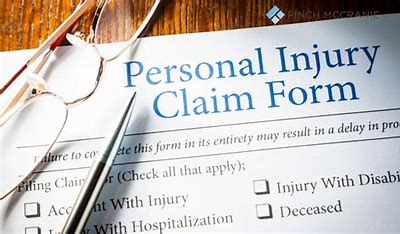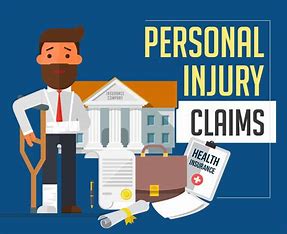Table of Contents
ToggleNavigating Personal Injury Claims: A Comprehensive Guide to Understanding and Choosing the Right Attorney
Introduction: Navigating personal injury claims can be complex and overwhelming, especially when you’re dealing with physical or emotional trauma alongside legal procedures. Whether you’ve been injured in a car accident, a slip and fall incident, or due to medical malpractice, seeking the guidance of a competent personal injury attorney is crucial. This comprehensive guide aims to provide insights into the intricacies of personal injury claims and assist you in selecting the right attorney to represent your case effectively.
Understanding Personal Injury Claims
Personal injury claims arise when an individual suffers harm due to the negligence, recklessness, or intentional actions of another party. These claims encompass a wide range of situations, including accidents on the road, injuries at the workplace, medical negligence, product defects, and more. The primary objective of filing a personal injury claim is to seek compensation for the damages incurred, which may include medical expenses, lost wages, pain and suffering, and other related losses.
The Role of a Personal Injury Attorney
A personal injury attorney serves as your legal advocate, guiding you through the complexities of the legal system and advocating for your rights. Their responsibilities encompass various tasks, including:
- Case Evaluation: A skilled attorney will assess the merits of your case by examining the evidence, gathering witness statements, and analyzing relevant legal precedents.
- Legal Representation: Your attorney will represent you in negotiations with insurance companies, other parties involved, and, if necessary, in court proceedings.
- Documentation and Filing: They will assist you in completing the necessary paperwork, filing the claim within the statute of limitations, and ensuring compliance with legal procedures.
- Negotiation: Experienced attorneys negotiate with insurance adjusters to secure a fair settlement that adequately compensates you for your losses.
- Litigation: In cases where a settlement cannot be reached, your attorney will litigate the matter in court, presenting your case before a judge and jury.
Choosing the Right Attorney
Selecting the right personal injury attorney is paramount to the success of your case. Here are some factors to consider:
- Experience: Look for an attorney with extensive experience in handling personal injury cases, preferably with a track record of successful outcomes.
- Specialization: Opt for an attorney who specializes in personal injury law rather than a general practitioner, as they possess in-depth knowledge and expertise in this specific area.
- Reputation: Research the attorney’s reputation within the legal community and among past clients. Online reviews, referrals, and testimonials can provide valuable insights into their professionalism and effectiveness.
- Communication: Effective communication is essential throughout the legal process. Choose an attorney who is accessible, responsive, and willing to keep you informed about the progress of your case.
- Fee Structure: Inquire about the attorney’s fee structure, including any upfront costs, contingency fees, or additional expenses. Ensure that the fee arrangement is transparent and reasonable.
| Whatsapp Group | 👉 अभी जुड़े |
| Telegram Group | 👉 अभी जुड़े |
Understanding the Claim Process:
Personal injury claims encompass a wide array of accidents and injuries, including, but not limited to:
- Car Accidents
- Slip and Fall Incidents
- Medical Malpractice
- Workplace Injuries
- Product Liability
Each type of claim may involve unique legal considerations and challenges. However, the basic steps in pursuing a personal injury claim typically include:
- Incident Documentation: Immediately after an accident, it’s crucial to document the incident by gathering evidence such as photographs, witness statements, and relevant documentation (e.g., police reports, medical records).
- Seeking Medical Treatment: The well-being of the injured party is paramount. Seeking prompt medical attention not only ensures proper care but also creates a documented record of injuries, which is vital for the success of the claim.
- Legal Representation: Once the injured party decides to pursue a claim, securing legal representation is imperative. A knowledgeable personal injury attorney guides them through the intricacies of the legal process, handles communications with insurance companies, and advocates for their best interests.
- Case Evaluation and Settlement Negotiation: After conducting a comprehensive evaluation of the case, the attorney engages in negotiations with the opposing party or their insurance company to reach a settlement that fairly compensates the injured party for their damages.
- Trial Proceedings (if necessary): In cases where settlement negotiations fail or liability is disputed, the attorney prepares the case for trial. They present evidence, examine witnesses, and argue the case in court, seeking a favorable verdict on behalf of their client.
Selecting the Right Attorney
Choosing the right personal injury attorney can significantly impact the outcome of a claim. Consider the following factors when selecting legal representation:
- Experience: Look for an attorney with a proven track record of handling personal injury cases similar to yours.
- Specialization: Opt for an attorney who specializes in personal injury law, as they possess in-depth knowledge and experience in this practice area.
- Reputation: Research the attorney’s reputation within the legal community and among past clients. Online reviews, testimonials, and referrals can provide valuable insights into their professionalism and effectiveness.
- Communication: Effective communication is essential. Choose an attorney who is accessible, responsive, and willing to keep you informed about the progress of your case.
- Fee Structure: Understand the attorney’s fee structure upfront, including any contingency fees or additional expenses. Ensure that the fee arrangement is transparent and reasonable.

Navigating the Legal Process
Once you’ve selected an attorney, the legal process begins with an initial consultation, during which you’ll discuss the details of your case and determine the best course of action. Your attorney will conduct a thorough investigation, gather evidence, and formulate a strategy tailored to your specific needs and objectives.
During negotiations, your attorney will work diligently to reach a settlement that adequately compensates you for your injuries and losses. If a settlement cannot be reached, they will prepare your case for trial and vigorously advocate for your rights in court.
Throughout the process, it’s essential to maintain open communication with your attorney, provide any requested information or documentation promptly, and follow their advice and guidance diligently.
Conclusion
Navigating a personal injury claim can be daunting, but with the assistance of a skilled and experienced attorney, you can navigate the legal process with confidence and pursue the compensation you rightfully deserve. By understanding the fundamentals of personal injury claims, selecting the right attorney, and actively participating in the legal process, you can increase the likelihood of a favorable outcome for your case. Remember, your attorney is your advocate and ally, committed to securing justice on your behalf.

1 thought on “Navigating Personal Injury Claims: A Comprehensive Guide to Understanding and Choosing the Right Attorney”